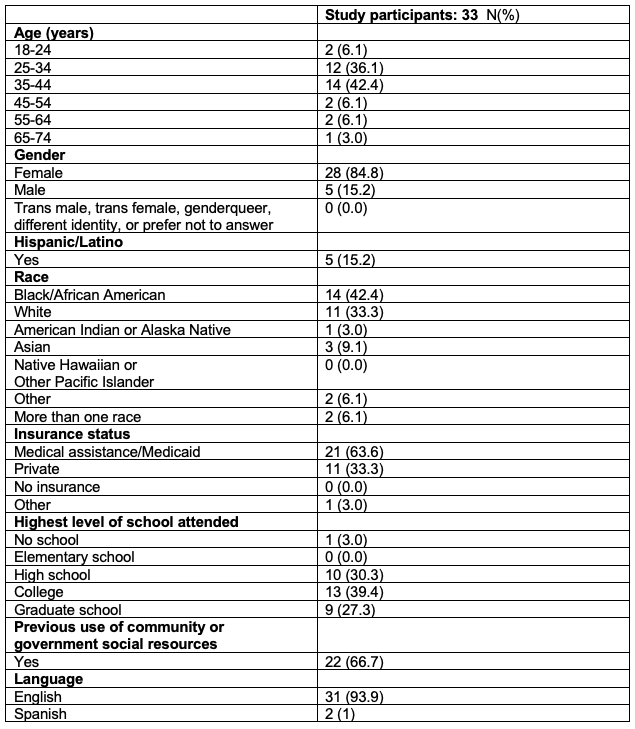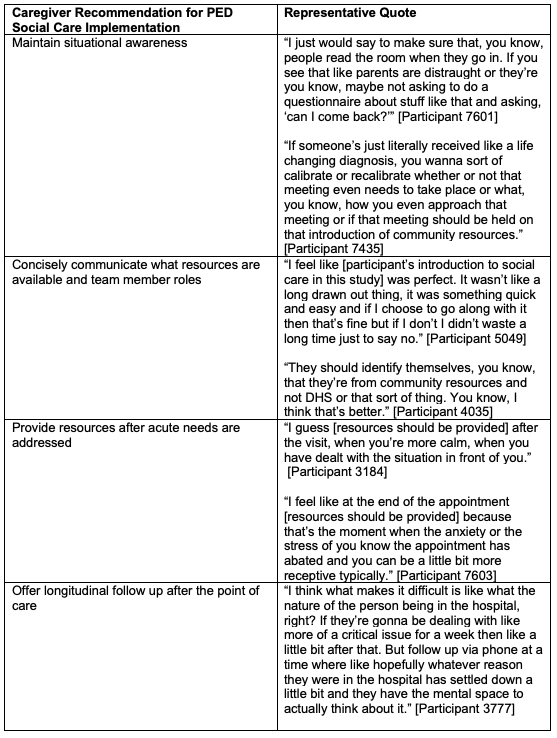Emergency Medicine 11
Session: Emergency Medicine 11
522 - Caregiver Recommendations for Social Care Implementation in the Pediatric Emergency Department
Monday, April 28, 2025
7:00am - 9:15am HST
Publication Number: 522.4301
Danielle L. Cullen, Children's Hospital of Philadelphia and the University of Pennsylvania, Philadelphia, PA, United States; Rachel Brown, Childrens Hospital of Philadelphia, Philadelphia, PA, United States; Joel Fein, Perelman School of Medicine at the University of Pennsylvania, Philadelphia, PA, United States

Danielle L. Cullen, MD, MPH, MSHP (she/her/hers)
Assistant Professor
Children's Hospital of Philadelphia and the University of Pennsylvania
Philadelphia, Pennsylvania, United States
Presenting Author(s)
Background: There is growing demand for interventions that address families’ unmet social needs in the pediatric emergency department (PED) setting. However, there remains a knowledge gap in how to implement these programs in a way that is both feasible and acceptable to families.
Objective: This qualitative study describes caregiver preferences for the delivery of social care in the PED to inform implementation.
Design/Methods: Caregivers of pediatric patients were enrolled in a large mixed-methods social care trial at two primary clinics and one PED affiliated with a large pediatric health system between September 2022-23. We used a hybrid random-purposive strategy to sample 60 caregivers for an interview, 33 of whom were enrolled in the PED. We developed an interview guide and codebook based on the Health Equity Implementation Framework and the Integrated Behavioral Model to explore caregiver perceptions of HRSN data collection and resource provision. Interviews were completed in English and Spanish and conducted until thematic saturation was achieved. Interview audio recordings were transcribed verbatim. We used thematic analysis with constant comparison to identify emerging themes among the PED participants regarding preferences for social care delivery that are unique to the PED setting.
Results: Our analysis yielded several PED-specific caregiver recommendations for social care implementation. Caregivers emphasized that maintaining situational awareness and monitoring whether it is medically and emotionally appropriate to approach families about social care is particularly important in the high-stress PED setting. Caregivers also recommended that the person offering social care concisely describe their role and the support they can provide. This approach immediately clarifies social care’s role in relation to medical care, which was a point of confusion for some caregivers, and reduces pressure to participate if they are overwhelmed. Furthermore, it allows caregivers to quickly make an informed decision about participation without distracting from their child’s care. Finally, caregivers preferred to receive social resources after acute needs are addressed or after the visit entirely. Caregivers explained that they would not have the capacity to meaningfully engage with social care in the PED and underscored the need for longitudinal follow up.
Conclusion(s): Health systems should integrate family-centered strategies that account for the unique characteristics of the PED when designing social care programs to maximize caregiver comfort and engagement.
Table 1. Demographics of qualitative study participants who were enrolled in the PED

Table 2: Representative Quotes


